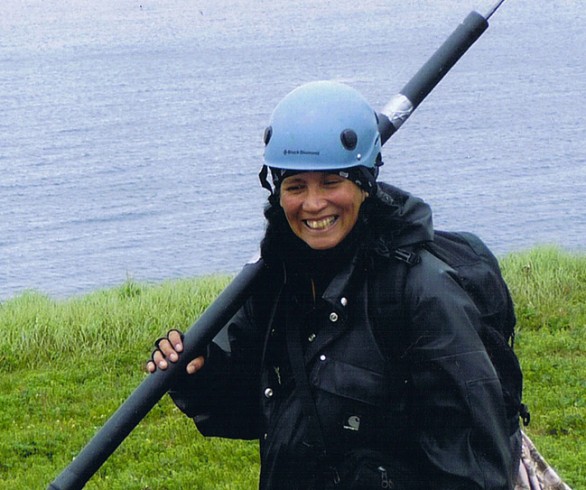Interview with DR. Rosana Paredes
 What is your job?
What is your job?
Research biologist
Why do people use GPS loggers to study seabirds?
GPS loggers can tell us about the location of seabirds. These loggers provide useful information about where and when birds feed, and these data can then be used for answering questions about the at-sea behavior of seabirds and the marine ecosystem. Bird location can be tracked over time to calculate total distance travelled or determine whether some marine habitats or locations are being used more than others.
The bird has to be recaught and the GPS retrieved in order to retrieve the data. You can imagine that recapturing a bird is often very tricky, and it’s not uncommon to loose many GPS loggers during a study. GPS loggers can cost $1500, so projects that use these loggers need to have lots of money, time… and patience!
What question are you most interested in?
I am interested in understanding how changes in the marine environment affect seabirds’ foraging behavior, and whether this knowledge can help us understand declines or changes in seabird populations.
How do you study these questions in the field?
I’ve recently been involved in a project comparing the foraging behavior of black-legged kittiwakes and thick billed murres on the two main Pribilof Islands (St. Paul and St. George). We attached a small GPS logger (approx. 10 g) on the tail-feathers and a small activity logger (approx. 2 g) on the leg of kittiwakes. The activity logger recorded whether the bird was wet (likely foraging) or dry (likely on the nest or flying), and the GPS logger gave us the location of this activity. These two data loggers work nicely together, allowing us to identify where birds were feeding.
What’s the most exciting or interesting experience you’ve had studying seabird movement with GPS?
The most exciting moment for me was when I first saw a Pribilof kittiwake track plotted into a map, and realized that birds were traveling much farther than expected. Some individuals on St. Paul were conducting trips up 250 km from the colony!!

